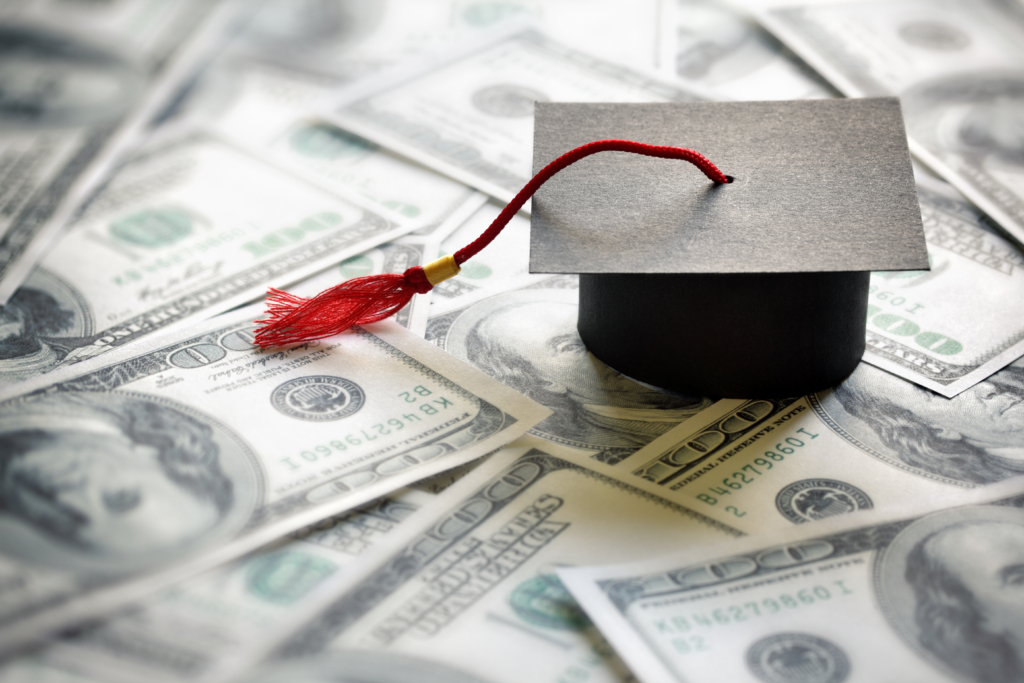
Starting in October, student loan repayments will begin again, after being on pause since 2020 due to COVID-19. It’s been a long time since borrowers have needed to factor in student loan payments to their monthly bills. Here are few things to know right off the bat:
Borrowers may be eligible for income-driven repayment plans by applying on StudentAid.gov. These plans will adjust your repayments based on your family size and income amount.
Loan forgiveness options may be available for borrowers who work in public service, have a qualifying disability, attended a school that abruptly closed, or were defrauded by the school they attended. More information on loan forgiveness options can be found here.
In August 2023, President Biden announced his new “Saving on a Valuable Education” Plan which is an income-driven repayment (IDR) plan. It will replace the previous IDR plan, called “REPAYE” or “Revised Pay As You Earn,” and it will take effect on July 1, 2024.
The SAVE Plan is a student loan repayment set up for recent college graduates who may have trouble repaying their loans for a variety of reasons, including the job market, broader economic conditions, and more. It calculates a federal student loan borrower’s monthly payments based on income and family size rather than loan balance.
All students and graduates who were previously enrolled in REPAYE will be automatically enrolled in SAVE, so it’s a good idea to know what will change come July. Let’s take a closer look at how the SAVE Plan differs from previous repayment systems.
Reduced Payments for Many
For starters, the SAVE Plan may significantly reduce payments for many college students and graduates. Qualifying borrowers who have undergraduate loans may have payments reduced from 10% of their discretionary income to just 5%. Meanwhile, qualifying students with both undergraduate and graduate loans will pay between 5% and 10% of their income, depending on their original loans’ principal balances.
Note that “discretionary income” in the SAVE Plan is the money left over between a borrower’s adjusted gross income and 225% of the poverty guideline, as defined by the US Department of Health and Human Services.
Need an example? If you’re a student loan borrower and make $15 an hour, you may not have to make any monthly payments toward your undergraduate loans.
Since the income exemption for reduced payments has increased from 150% of the poverty line to 225% of the poverty line, let’s explore more about what this means in real dollar terms:

That’s not all the SAVE Plan brings to the student loan repayment and forgiveness table. The SAVE Plan completely eliminates 100% of the remaining interest for both subsidized and unsubsidized loans once you make a scheduled qualifying payment.
In other words, so long as you make your regular monthly payments at the minimum required amount, your loan balance will not grow due to interest accrual. Say that you have a loan that requires a $30 payment on the first of each month. If $50 of interest accumulates, but you make your required payment of $30, the remaining $20 of interest accrued won’t be added to your loan balance.
In the long run, this means you’ll pay less for your student loans over their lifespan.
There are a few other changes that the new student loan forgiveness plan brings.
For example, spousal income is now excluded for those borrowers who are married but file their tax returns separately. Previously, under the REPAYE system, married borrowers had to have their spouses cosign their IDR applications.
What about total forgiveness? The SAVE Plan may forgive the remainder of your student loans under the following circumstances:
What if your loan principal balances were over $12,000? For every $1,000 you borrow above the $12,000 minimum, the SAVE Plan requires you to make another year of payments for up to 20 or 25 years maximum before your remaining loans are forgiven.

As you can imagine, the new SAVE Plan may have a positive effect on your finances if you previously took out any amount of federal student loans for your college education.
Here are some of the estimated savings and benefits you might see as a student loan borrower, per the Department of Education:
Even better, if you were previously enrolled in the REPAYE Plan, you will be automatically enrolled in the SAVE Plan. You don’t have to apply for the SAVE Plan, make adjustments to your payment schedule, or take any further action.
To confirm which repayment plan your loans are currently on and to find answers to any additional questions you may have as you navigate resuming student loan payments, visit StudentAid.gov.
The information and materials provided on this website are intended for informational purposes only. They should not be treated as an offer or solicitation of credit or any other product or service of Regional Finance or any other company. This website may contain links to websites controlled or offered by third parties. The inclusion of any third-party link does not imply any endorsement by Regional Finance of the linked third party, its website, or its product or services.
Sources:
https://studentaid.gov/announcements-events/save-plan
https://thehill.com/business/4103586-what-bidens-save-plan-means-for-student-loan-borrowers/
https://studentaid.gov/manage-loans/repayment/prepare-payments-restart
You can prequalify for your personal loan online in just minutes by clicking prequalify now. Or, if you prefer, call or stop by your local branch to get the process started. Our loan specialists can answer any questions you may have such as what a personal loan is, understanding personal loan interest rates, and how to qualify for a personal loan. We’ll help you fill out an application for the type of loan that fits your needs.